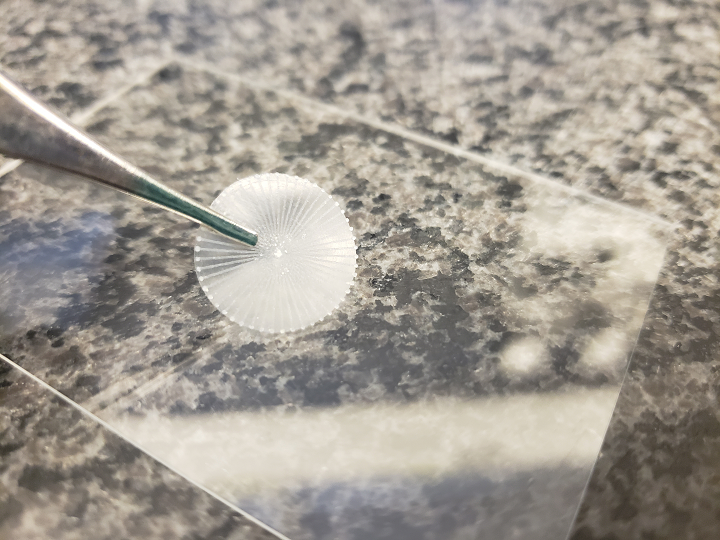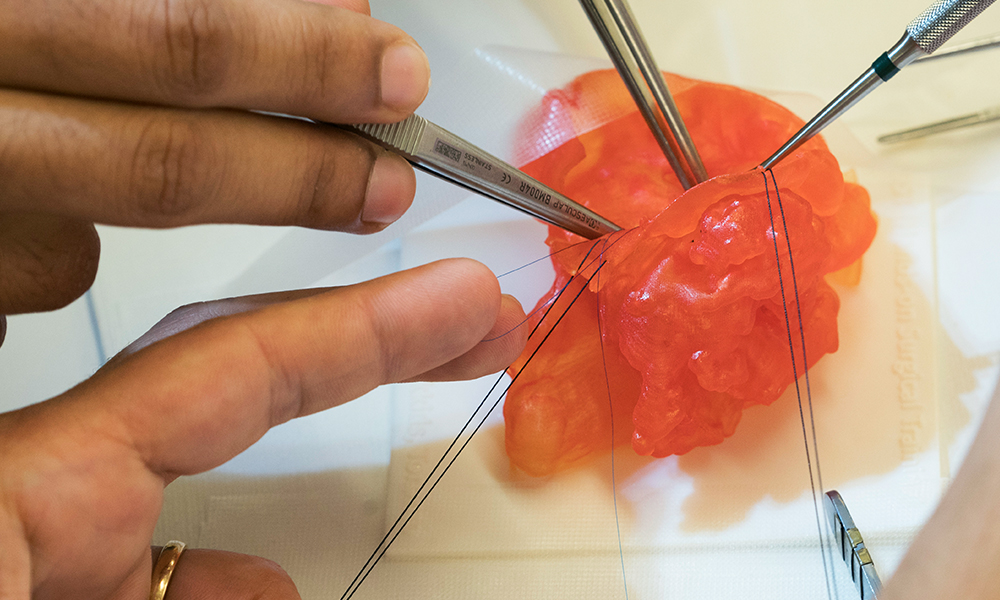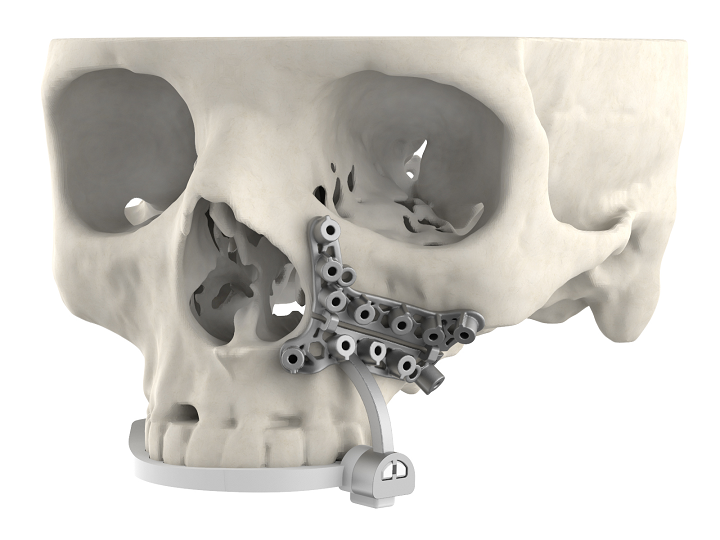According to Savi Baveja, HP’s Chief Strategy & Incubation Officer, technologies such as 3D printing and microfluidics are beginning to “realize the better outcomes that have long been promised of personalized medicine.” Many 3D printing labs in hospitals are using the technology to create items like surgical models and guides, and plenty of companies are 3D printing personalized prosthetics and orthotics, casts, splints, and other assistive devices. 3D printing helps physicians better control patients’ recovery processes, while also helping patients better understand what’s going on in their own bodies.
“The demand is already substantial — the personalized medical solutions market, inclusive of personalized orthotics and prosthetics, is valued at approximately $10 billion — and the need is growing at an exponential clip,” Baveja wrote. “The WHO estimates that one billion people need assistive products today and more than two billion people around the world are expected to need at least one assistive product by 2030.”
In its yearly AM market predictions, Shapeways shared a similar view of the positive impact 3D printing can have on personalized healthcare and patient-specific medical treatment.
“The ability to create new parts, keep a digital inventory of replacement parts, and even bring obscure parts back to life spans critical applications for automotive, railway, and aerospace applications,” Shapeways wrote. “For the medical industry however, 3D printing is uniquely important as it offers incredible avenues for enhancing the quality of life for humans, as well as saving lives too. This has been proven with a variety of customized medical devices, prosthetics, and robotic arms.”
Citing data that shows the AM market is likely to reach $5.1 billion by 2026, Shapeways wrote that expected advancements will continue with 3D printed items such as surgical guides and instruments, medical models, prosthetics, customized implants, and wearable devices.
As SmarTech Analysis said in 2021, 3D printing is showing “true signs of disruption within the healthcare industry,” with “scope for major innovation within the medical field through the adoption of 3D printing.” The technology offers more automation, customization, and digitization, which leads to better patient outcomes and cost reduction for device OEMs. With this in mind, 3DPrint.com asked some of the experts in our industry for their thoughts on what’s ahead for healthcare 3D printing in the coming year. It shouldn’t surprise you that personalization was at the top of the list.
“3D printing will continue to empower the healthcare industry and professionals to unleash the potential to offer the best possible patient care. The future lies in point-of-care 3D printing with innovative solutions closer to the patients,” Mohsen Seifi, PhD, Director, Global Additive Manufacturing Programs, ASTM International, told us. “With continuous advancements in the 3D printing industry, the health care sector will witness real ‘personalization’ that transforms lives through bioprinting, regenerative medicine and beyond. Standards and regulation are key, and a great body of work is ahead of us.”
ASTM International works to educate industry professionals, and has defined and set thousands of standards that are operating all around the world to improve the lives of millions of people. In 2020, the organization worked with America Makes to create a strategic guide for 3D printing data that can be used by industry stakeholders and AM experts who want to help develop an AM data ecosystem and contribute to standardization. In a recent roundtable, Materialise dug a little deeper into “the increasing relevance of data in 3D printing,” and touched on its importance in the medical field.
“For medical AM applications, we need to distinguish between two types of data. On one hand, smarter data allows medical companies to upscale the production process of personalized and increasingly complex medical devices,” explained Pieter Slagmolen, Materialise Innovation Manager for Medical. “On the other hand, there is also ‘patient data’. Incorporating this personalized data into the planning and production process allows us to improve patient treatment, but it also introduces additional concerns about privacy and data security.”
Of course, as Materialise CTO Bart Van der Schueren explained, “manufacturers can share data with greater confidence” by making it anonymous, enabling them to “empower others and fuel industry innovation without disclosing their competitive advantage.”
Data allows manufacturers to come up with better processes and designs, which not only saves money—healthcare is also a business, after all—but can also improve patient results.
“Most manufacturers will not only claim ownership of designs and processes, but also express the desire to control them. They may decide to share some of these insights in order to empower other users, but manufacturers should retain ownership and control. This will enable them to create smarter production processes that allow them to leap ahead of the competition,” said Peter Leyes, Materialise Executive Chairman.
When it comes to medical 3D printing applications, Materialise said that hospitals and medical device manufacturers “clearly” own the process data for quality assurance purposes, though it’s still unclear who officially owns patient data. Regardless of ownership, it’s necessary to access patient data in order to deliver “the most optimal care.”
Both types of data are needed for 3D printed personalized medical care, which, as Desktop Health‘s President and CEO Michael Jafar told 3DPrint.com, will “change many aspects of medicine from cost savings to time savings — there won’t be an area that isn’t affected positively by 3D printing.”
“Today, when a patient needs to have a personalized stint or graft made, they might have to stay at the hospital for several days while that product is being made for them. This would end up costing the patient in the thousands just for the hospital stay,” Jafar continued. “Now with 3D printing, the doctor is able to digitally create the stint or graft needed and create the customized product within just a few hours, significantly cutting the patient’s hospital bill. The personalization of 3D printing for healthcare allows for a better fit, less failure and greater speed and cost savings.”

PhonoGraft: biomimetic graft has the potential to enable high-quality, long-lasting eardrum reconstruction
Desktop Metal launched its medical 3D printing division last year, which is focused on healthcare-adjacent 3D printed products, such as customizable, patient-specific implants, dental prosthetics, and an innovative technology platform for 3D printing eardrum grafts.
“Additive manufacturing is going to be our only solution for how we manufacture goods in the future, including healthcare. This isn’t 10 years or even five years out. The future is within the next two years,” Jafar continued. “Companies will need to find more sustainable ways to manufacture their goods. It is an incredible and amazing time to be a part of this industry change that will have such a profound impact on the global thumbprint and our ecosystem. 3D printing is bringing healthcare to the cusp of a revolution through pushing the boundaries and making applications that could minimize inventory, minimize supply chain issues, increase patient care and decrease time spent in hospitals. Once 3D printing is widespread, you should be able to get something printed to exactly your specifications in 30-60 minutes instead of 1+ weeks.”
From what Co-Founder, Chairman, and CEO Avi Reichental told us, it seems that Nexa3D is in full agreement.
“Localized production will continue to play a large role in the healthcare sector. The continuing pandemic conditions around the world have led to more interest in telehealth,” Reichental told 3DPrint.com.
He mentioned a collaborative project that Nexa3D took part in last year, where the focus was on 3D printing a connected stethoscope for telehealth purposes.
“Collaborating with our partners at Third, Hava, and Henkel, we worked with French telehealth startup WeMed to 3D print a stethoscope, the SKOP, that individuals can use in their homes to work directly with their healthcare providers. Products like the SKOP that can be 3D printed at production scale make healthcare more accessible and affordable for more people,” he continued. “That’s what 3D printing has always promised, and we’re seeing that come to pass in a really impactful way in the medical field. Of course responses to the pandemic, like PPE, remain a large priority as well. These are opening doors for more people in the healthcare space to understand how to work with new technologies.”
During RAPID 2021, Reichental predicted that Nexa3D’s future in healthcare and dental was wide open, as the two are “truly open-ended verticals for AM in general and Nexa3D in particular.” He believes that the “digitization of surgical planning workflows” and “adoption of patient-specific surgical guides” will only increase, as surgeons will continue to use 3D printed implants and medical models for training, medical device testing, and in surgery.
Another company that believes adoption of 3D printing in the healthcare industry will only continue to grow is 3D Systems.
“We are seeing 3D printed patient-matched surgical tools and implanted devices become more broadly adopted as benefits are demonstrated through an increasing number of clinical studies that are performed by both commercial and education groups,” said Menno Ellis, EVP, Healthcare Solutions, 3D Systems. “We expect adoption to be further spurred by technical advancements in 3D printing that will enable cost-effective solutions across larger parts of the human anatomy.
“As COVID has confronted companies worldwide with supply chain constraints, this has served as a further catalyst for leading-edge medical and dental point of care providers to bring the production of implants and appliances closer to the patient. The capabilities and economic benefits of 3D printing solutions are well suited to these initiatives, and we expect increased activity in this space.”
Another major application for 3D printing in healthcare is personalized medical models, something with which Stratasys is very familiar. The company’s 3D printing and advanced manufacturing services provider, Stratasys Direct Manufacturing, even opened a dedicated healthcare print center at its Minnesota-based PolyJet Design and Print Center, and the new healthcare services increase the company’s healthcare offerings to include anatomical model design. Jessica Coughlin, Director of Healthcare Market Access for Stratasys, told 3DPrint.com that in 2022, 3D printing will continue to be used “at the point-of-care for personalized anatomic models.”
“In addition to improving the clinical evaluation of various pathologies, patient-specific anatomic models allow physicians to plan and rehearse surgical procedures, as well as educate the patient, with a model that accurately mimics a patient’s anatomy and pathology,” Coughlin continued. “Improving clinical outcomes and saving time and money are essential goals of any healthcare organization and 3D printing is revolutionizing the way healthcare is delivered by offering personalized solutions. In the next year we expect to see more hospitals, medical device companies, dental labs and clinics incorporating innovative 3D printing solutions into their workflows to save time, money and improve patient outcomes.”

Stratasys J750 Digital Anatomy can help standardize surgical skills and delivery of care by practicing on the most accurate representation of the targeted pathology.
3D printing in the healthcare field is one of nine AM verticals that industry experts will focus on in our Additive Manufacturing Strategies summit, held as a hybrid event both online and in-person in New York City from March 1-3. Topics in this session will include end user hospitals and clinical experiences, 3D printing in surgical planning and modeling, regulations, and more. You can register for the summit here; in-person attendees must be fully vaccinated.
(Feature image courtesy of Stratasys.
Subscribe to Our Email Newsletter
Stay up-to-date on all the latest news from the 3D printing industry and receive information and offers from third party vendors.
Print Services
Upload your 3D Models and get them printed quickly and efficiently.
You May Also Like
Reinventing Reindustrialization: Why NAVWAR Project Manager Spencer Koroly Invented a Made-in-America 3D Printer
It has become virtually impossible to regularly follow additive manufacturing (AM) industry news and not stumble across the term “defense industrial base” (DIB), a concept encompassing all the many diverse...
Inside The Barnes Global Advisors’ Vision for a Stronger AM Ecosystem
As additive manufacturing (AM) continues to revolutionize the industrial landscape, Pittsburgh-based consultancy The Barnes Global Advisors (TBGA) is helping shape what that future looks like. As the largest independent AM...
Ruggedized: How USMC Innovation Officer Matt Pine Navigates 3D Printing in the Military
Disclaimer: Matt Pine’s views are not the views of the Department of Defense nor the U.S. Marine Corps Throughout this decade thus far, the military’s adoption of additive manufacturing (AM)...
U.S. Congress Calls Out 3D Printing in Proposal for Commercial Reserve Manufacturing Network
Last week, the U.S. House of Representatives’ Appropriations Committee moved the FY 2026 defense bill forward to the House floor. Included in the legislation is a $131 million proposal for...






































